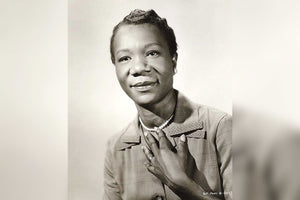Birthday- 4 February 1868
Who Was Constance Markievics?
Constance Markievicz was a political activist and countess. She was elected in the British Parliament in 1918 as the first woman though she did not take that seat. Constance was also the first woman to serve in the Irish Assembly, where she took the role of minister of labor from 1919 to 1922.
Top 5 Facts About Constance Markievicz
- Constance Markievicz was a champion of the Irish Arts Revival competition.
- She was a military leader in the Easter Rising in 1916
- On account of her gender, her death sentence was lessened to a life imprisonment
- She spent most of her life in prison for her nationalist activism
- She became the first woman to hold a cabinet position in Western Europe
Constance Markievicz Quotes
“Dress comfortably and leave your jewels behind in the bank and buy a revolver.”
“I remain as a rebel while Ireland is not free”
Constance Markievicz Biography
Early Life and Education
Constance Markievicz was born in London in 1868 to Lady Georgina Gore-Booth and Sir Henry Gore-Booth. Her father was an Anglo-Irish landlord and Arctic explorer. Constance lived with her family at Lissadell estate in Co.Sligo, Ireland, where she enjoyed a privileged childhood. She was educated by a governess and enjoyed riding and hunting.
In 1897 during her jubilee year, Constance was presented to the court by Queen Victoria. She had a great concern for the poor during the famine of 1879. She was inspired by her father, who gave food to all his tenants.
Constance took a painting course at Slades School of Art London and later continued with her studies at the Academie Julian in Paris. Constance was brought up alongside her sister Eva.
Marriage Life
While studying in Paris, Constance met her partner Casimir Markievicz and got married in 1900. Casimir was an artist from a wealthy family. In 1901, Constance gave birth to a daughter by the name of Maeve. Her daughter was raised in Lissadell by the Gore-Booth grandparents.
Constance and her husband moved to Dublin in 1903, where they started participating in artistic scenes.
In 1905, they founded the United Arts Club, including many Irish nationalists such as Douglas Hyde. He later became Ireland’s first president.
Career
Constance started her activist political journey after she married Casimir and moved to Dublin. Her interests shifted from art to Irish politics, and she embraced Irish nationalism in 1908 and joined Daughters of Ireland, a revolutionary women’s group. In 1909, she formed Soldiers of Ireland, which was a republican organization partly based on By Scouts. The organization aimed to train boys to become nationalist soldiers.
She demonstrated against King George V’s visit to Ireland and was arrested in 1911. During her lifetime, she was arrested several times, and at one time, she was imprisoned for political activism.
In 1913-1914, Markievicz offered food to workers and families. This came during a labor dispute where most people were denied access to their workplaces due to their refusal to reject union membership.
In April 1916, Constance participated in the early rising-a republic insurrection against British Government and was arrested and imprisoned. She faced a death sentence, but on account of her gender, the sentence was eased to a lifetime of penal servitude. In 1917, Markievicz was released under a general amnesty, but she was jailed again for plans to participate in a demonstration against the British Government.
She was elected as a representative to the House of Commons while still serving her jail term in December 1918. However, her refusal to swear an oath of allegiance to the king denied her the seat. Under Eamon de Valera’s leadership, the Irish republicans started their own provisional government-Dail Eireann.
In 1919, Markievicz was released from prison. She took the role of minister of labor in Dail Eireann until 1922, when she was defeated.
After the establishment of the Irish Free State in 1922, Dail Eireann was inducted into the Irish Parliament.
In 1923, there was a general election where Markievicz was elected but again did not swear allegiance to the king, which prevented her from taking the seat. She instead decided to devote herself to works of charity. She joined de Valera’s Fianna Fail party in 1926 and was elected to Dial in 1927. A month after she was elected, Markievicz passed on before she took the seat.
Death and Legacy
Markievicz was 59 when she died of appendicitis’ related problems. She died on 15 July 1927, having given away her wealth. She died while in a public ward where the poor were in accordance with her will. She refused to be given a state funeral and was buried at Glasnevin Cemetery in Dublin. She is greatly remembered for her courage in advocating for the rights of her country’s people and giving to the poor.
![]() Fast Shipping
Fast Shipping![]() Subscribe to our Newsletter
Subscribe to our Newsletter![]() 🌟 New Global Competition 🌟
🌟 New Global Competition 🌟















